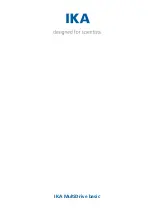
ESSI Programming Model
7
-22
DSP56303 User’s Manual
11
CKP
0
Clock Polarity
Controls which bit clock edge data and frame sync are clocked out and
latched in. If CKP is cleared, the data and the frame sync are clocked out
on the rising edge of the transmit bit clock and latched in on the falling
edge of the receive bit clock. If CKP is set, the data and the frame sync
are clocked out on the falling edge of the transmit bit clock and latched in
on the rising edge of the receive bit clock.
10
FSP
0
Frame Sync Polarity
Determines the polarity of the receive and transmit frame sync signals.
When FSP is cleared, the frame sync signal polarity is positive; that is, the
frame start is indicated by the frame sync signal going high. When FSP is
set, the frame sync signal polarity is negative; that is, the frame start is
indicated by the frame sync signal going low.
9
FSR
0
Frame Sync Relative Timing
Determines the relative timing of the receive and transmit frame sync
signal in reference to the serial data lines for word length frame sync only.
When FSR is cleared, the word length frame sync occurs together with the
first bit of the data word of the first slot. When FSR is set, the word length
frame sync occurs one serial clock cycle earlier (that is, simultaneously
with the last bit of the previous data word).
8–7
FSL[1–0]
0
Frame Sync Length
Selects the length of frame sync to be generated or recognized, as in
Figure 7-6 on page 7-24, Figure 7-9 on page 7-27, and Figure 7-10 on
page 7-27.
FSL1
FSL0
Frame Sync Length
RX
TX
0
0
word
word
0
1
word
bit
1
0
bit
bit
1
1
bit
word
6
SHFD
0
Shift Direction
Determines the shift direction of the transmit or receive shift register. If
SHFD is set, data is shifted in and out with the LSB first. If SHFD is
cleared, data is shifted in and out with the MSB first, as in Figure 7-12 on
page 7-31 and Figure 7-13 on page 7-32.
5
SCKD
0
Clock Source Direction
Selects the source of the clock signal that clocks the transmit shift register
in Asynchronous mode and both the transmit and receive shift registers in
Synchronous mode. If SCKD is set and the ESSI is in Synchronous mode,
the internal clock is the source of the clock signal used for all the transmit
shift registers and the receive shift register. If SCKD is set and the ESSI is
in Asynchronous mode, the internal clock source becomes the bit clock for
the transmit shift register and word length divider. The internal clock is
output on the SCK signal. When SCKD is cleared, the external clock
source is selected. The internal clock generator is disconnected from the
SCK signal, and an external clock source may drive this signal.
Table 7-4. ESSI Control Register B (CRB) Bit Definitions (Continued)
Bit Number
Bit Name
Reset Value
Description
Содержание DSP56303
Страница 1: ...DSP56303 User s Manual 24 Bit Digital Signal Processor DSP56303UM AD Revision 1 January 2001 ...
Страница 52: ...JTAG OnCE Interface 2 22 DSP56303 User s Manual ...
Страница 114: ...General Purpose Input Output GPIO 5 10 DSP56303 User s Manual ...
Страница 212: ...GPIO Signals and Registers 8 26 DSP56303 User s Manual ...
Страница 268: ...Interrupt Equates A 22 DSP56303 User s Manual ...
Страница 306: ...Programming Sheets B 38 DSP56303 User s Manual ...
Страница 320: ...Index 14 DSP56303 User s Manual ...
















































